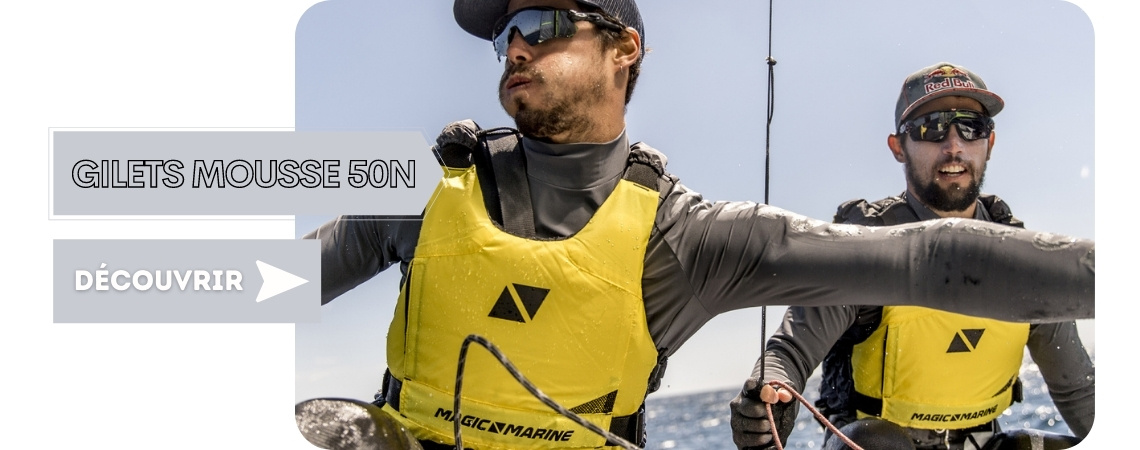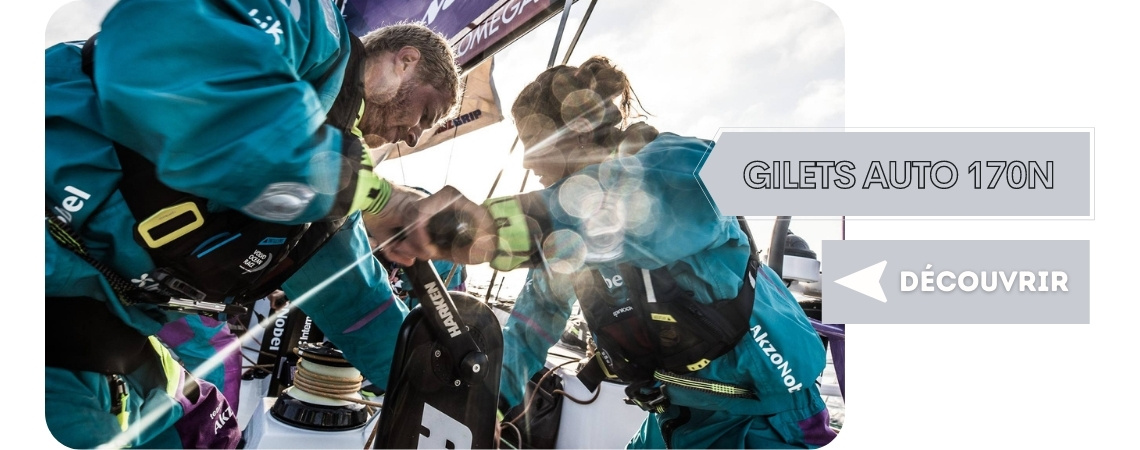How to choose a lifejacket ?
Your choice of lifejacket should depend on your sailing program, body type and conditions of use. To choose the right model, you need to determine the buoyancy suitable for your activity before buying a lifejacket. And to be effective, your lifejacket must be worn at all times. Choosing the right lifejacket means putting all the odds on your side in the event of an accident at sea.
Standards, conditions of use and morphology
With so many models on the market, it can be hard to find the right lifejacket. Size, weight and newtons are all criteria that need to be defined before buying a lifejacket. If worn, the personal flotation device, or PFD, is an essential safety feature that will increase your chances of survival in the water in the event of an accident. That's why it's so important to know how to choose the right type of lifejacket, based on Iso standards, conditions of use (such as distance from a shelter) and the wearer's morphology.
As a reminder, buoyancy aids and lifejackets are mandatory for professional or leisure activities at sea or on the water, and must meet the standards of the European Directive on Personal Protective Equipment (E.P.I 89/686/CE). CE" marking on the label of your lifejacket is compulsory and ensures that it complies with this same standard.
The essentials for making the right choice
Personal flotation devices come in 2 main categories. In both cases, different products are available and can be easily adapted to the wearer's morphology, depending on whether he or she is a man, woman or child. For optimum comfort, you can also choose your lifejacket according to your size, weight and activity.
-
Buoyancy aid : Better known as a foam vest or safety armband, buoyancy aids guarantee sufficient safety for nautical activities ranging from sheltered waters to rough seas. Bulky, but offering good value for money, the capacity of a foam vest can range from 50 to 150 Newton for the most common models. For this type of vest, you'll need to select a size according to your weight. The same type of flotation vests are also available for your dog on our site.

-
Inflatable vest :
The inflatable vest ensures that even an unconscious person can be turned over. An inflatable vest is more expensive to manufacture, but more comfortable and less cumbersome. This makes maneuvering and moving around on deck easier. There are 2 main families of inflatable lifejackets: those with an automatic release system (the lifejacket lung is inflated either by immersion or water pressure) and those with a manual release system (minimum safety level). This category of automatic vests is the most widespread in coastal and offshore sailing.

Buoyancy adapted to your needs
Depending on the distance in nautical miles you are from the coast or from a shelter, regulations require you to wear a specific type of lifejacket. The type of lifejacket will also depend on your activity, even if you or your children are using it as a leisure activity. To help you make the right choice, take a look at our advice page.
Your lifejacket will differ depending on whether you're kayaking in a river or offshore racing. Fishing, for example, is also a water sport, and will be assigned a specific type of lifejacket, usually foam or manual release. The more appropriate your lifejacket, the greater your chances of survival in the event of danger, which is why it's essential to choose it carefully. Finally, once you've chosen your vest, it must be worn or clearly identifiable on board the boat in which you've embarked.
Accessories for lifejackets: make the right choice here too
A lifejacket is often sold with additional equipment or accessories. Choosing a well-equipped lifejacket can save precious minutes in rescue operations.
Reflective strips for visibility in low-light conditions, a harness, a subcutaneous strap, a UML Pro Sensor release system with cartridge status window... these are just some of the accessories, sold as additional equipment, to help you make the right choice when purchasing a lifejacket, without ever neglecting your safety.











